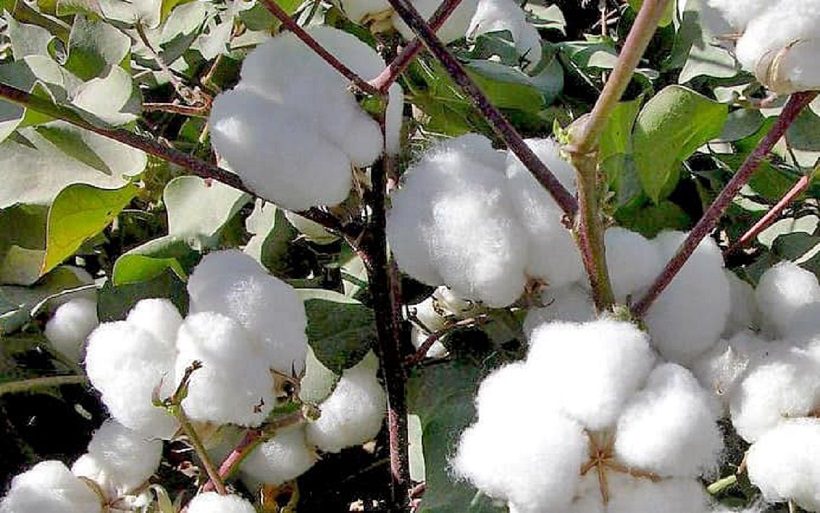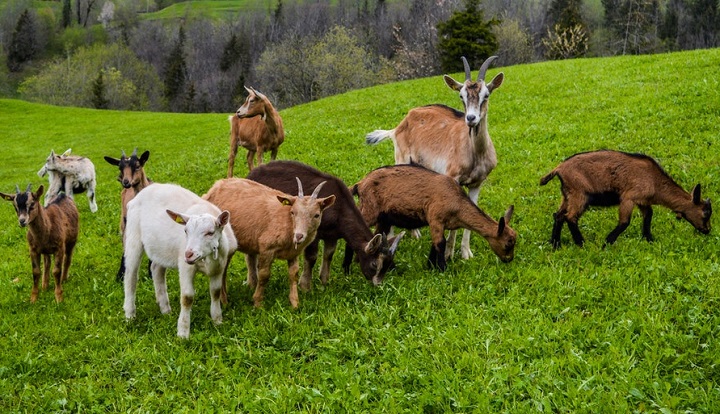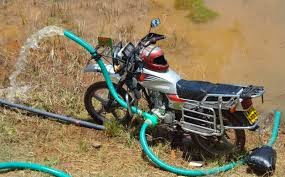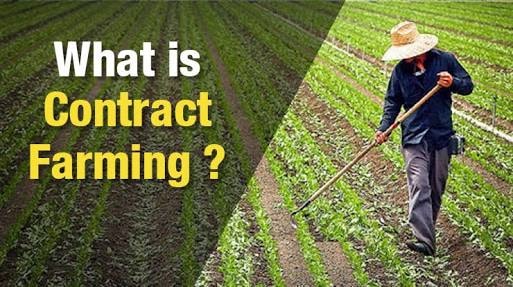Is cotton growing a profitable agribusiness idea for you? In this blog post, you will find an estimate of the costs and benefits of cotton farming in the country. The post uses the cost and benefits analysis formula to estimate the profits for you. Among other information, you will learn about the following topics.
Facts about cotton farming in Kenya
Cotton is one of the key crops in Kenya’s ASTGS 2019-2029. It is expected to enable farmers to generate complementary and directly usable income that can be spent not only on food but also on health care and school fees for children. Furthermore, increased cotton production will spur growth in the upper parts of the value chain and increase employment opportunities.

Does Kenya have a business opportunity in cotton farming? Below are some select facts and trends about the cotton and organic fiber industry in Kenya.
Key facts about cotton production in Kenya
- The annual Cotton production in the country is an average of 2,000MT (10,000 bales) a key decline from a peak of 13,000 MT (70,000 bales) in 1986
- In 2021, the annual lint consumption by the textile mills was 8,000MT (41,200 bales) against a demand potential of 26,000MT (140,000 bales).
- The country’s yield potential is to produce 37,000MT (200,000 bales) of lint annually.
- Kenya has 385,000 ha of arable land that is suitable for cotton growing. Only about 20,000 ha is currently being utilized
- There are currently about 40,000 cotton farmers in Kenya. The crop can be grown by 200,000 households across 24 out of 47 counties in Kenya.
- There are 10 registered cotton seed varieties in the country.
- The average cotton yield in Kenya is 572kg/ha on rainfed farming and 1500kg/ha on irrigation.
- Between 2006-2018, Lint yields in Kenya averaged 196 kgs/Ha.
Advantages of cotton growing
Is cotton farming a good idea for you? The cotton plant has been dubbed as white gold for its many benefits to individual farmers and the economy. Apart from it being a sustainable cash crop for marginal regions in Kenya, the cotton plant contributes to food security and income generation. Other benefits why you should consider engaging in the cotton growing are;
It’s one of the most potential cash crops earning you income if you are a farmer in one of Kenya’s 24 ASAL counties
Cotton growing provides raw materials for developing local industries; in textile, edible oil, bio-energy, and livestock feeds
There is an unmet demand for cotton in Kenya. This has resulted in the rising cost of lint and today Kenya imports some from her neighboring countries at an F.O.B price per Ton of USD 2500.
Best Cotton Growing Areas in Kenya
Are you wondering where cotton is grown in Kenya? The suitable ecological conditions and areas for cotton growing in Kenya should have.
- An altitude of 0-1,372 meters above sea level
- Temperatures of 21-30 °C
- Rainfall of 500-750mm for four and half months, in a single rainy season.
- Well-drained soils either black cotton, red clay, or sandy loams with a pH range of 5.0-8.00 (optimum 6.2).
Given the above agroecological conditions, the following counties are suitable for cotton farming in Kenya
- Western (Busia, Siaya & Bungoma);
- Nyanza (Kisumu, Homa Bay & Migori);
- North Rift (Elgeyo Marakwet, Baringo, West Pokot & Turkana);
- South Coast (Kwale, Taita Taveta & Kilifi);
- North Coast (Tana River & Lamu);
- Lower Eastern (Kitui, Makueni & Machakos);
- Upper Eastern (Muranga, Embu, Kirinyaga & Tharaka Nithi);
- Upper Upper Eastern (Marsabit, Isiolo, Meru & Laikipia).
How to grow cotton in Kenya
Below is an abridged version of the cotton growing handbook or guidebook. It will guide you on all you need to know for cotton farming from land preparation to post-harvest management.
Cotton seed varieties in Kenya
Kenya has 10 registered seed varieties. Two of them are key; HART 89M is suitable for the Eastern Region and KSA 81M Western region. The 2 varieties have been in existence for commercial production for more than three decades.
There are additional hybrid cotton seeds that were evaluated and released for commercial production; Hazera seed, (HA701 and HA211) and MAHYCO seed (C570, C571, C567 & C569). Similarly, the county has improved BT or GMO seed varieties that you can grow. To select the best read about our cotton seed selection guide on the link below.
Read More: Which is the best cotton Variety in Kenya?
Land preparation
All crop residues should be destroyed at least one month before planting season without harming the environment. Prepare the land for sowing a month before the expected time of rains begins or planting. The encouraged tillage is to a depth of 1 – 1½ feet, or 30cm – 40cm Do this least once every four years to reduce soil compaction and formation of hardpan or where possible, use conservation farming. .
Plowing should be followed by harrowing to give you an adequate soil texture (tilth). Furrows should be cut to drain excess water, especially in black cotton soils. In areas where there is scarce rainfall, tied ridging is recommended for soil moisture conservation. Soil amendment should be implemented where necessary to bring the site to its optimum production levels.
Irrigation
Where irrigation is essential, it is recommended to apply at intervals of once every three weeks (21 days). The most critical stages of irrigation are flowering and bolling during which you should avoid water stress
Planting & spacing
Dry planting manually using Panga, Jembe, or ox-plough at 4-5cm deep, at a seed rate of 1.5-3 kg/acre for hybrids and inbred varieties respectively. Planting should be completed at least one week before the onset of the rains. This will involve planting 1-2 seeds per hole at an inter-row spacing of 90 to 120 and interrow spacing of 60 to 30 cm respectively.
Thinning, gapping, and weeding
Thinning involves the removal of excess seedlings to achieve an ideal plant population. Do it at 3 weeks after emergence to have 1 or 2 plants only per hole.
Weeding is the removal of weeds. Do it at the second (2nd) week after germination and the second time at the end of the eighth (8th) week. Application of postemergence herbicide twice will maximize cotton yields.
Herbicides for weed control include Round Up (Glyphosate), Diuron (Diurex), and Paraquat Dichloride (Gramoxone), among others.
Soil fertility management
You are encouraged to apply both organic and inorganic fertilizers. The type and amount are dependent on soil test results. Do a soil analysis once every 3-5 years.
Organic manure will help to improve the soil’s physical and biological properties. If you have manure use it at a rate of 2-4 tons per acre depending on the soil analysis results and the recommendations thereof.
Which is the best fertilizer for cotton growing in Kenya? The general guidelines according to some common soils in cotton growing areas in Kenya
| Soil Type | Fertilizer Recommendations |
|---|---|
| Reddish-brown clay | 55kg/acre Triple Super Phosphate (TSP) or 55kg/acre of Diammonium Phosphate (DAP) at planting. |
| Black cotton soil | Apply the basal inorganic fertilizer during planting if required. Top-dress with 41kg/acre of Calcium Ammonium Nitrate (CAN). |
| Sandy Soil | Apply the basal inorganic fertilizer during planting if required. Top-dress with 61kg/acre of Sulphate of Ammonia (SA). |
To manage mineral deficiency, you can also use foliar fertilizers to avoid premature defoliation and boil shedding. The following liquid fertilizers are recommended for spraying.
- The onset of squaring (about 7 to 8 weeks after planting) N:P: K (19:19:19 OR 20:20:20) water soluble fertilizer application – 1kg/acre
- Boll formation stage (about 10 to 11 weeks after planting) N:P: K (19:19:19 OR 20:20:20) water soluble fertilizer application – 1kg/acre
Pest and Disease Management
Cotton is attacked by a wide range of arthropods pests and diseases. Pests and disease scouting should be performed to assess the level of infestation and infection respectively before the control measure is instituted. Pesticides should be handled in a manner that ensures the safety of handlers and the environment as guided by the Occupational Health and Safety Act and Environmental Management and Coordination Act. The following are some of the key pests.
| Pests | Diseases |
|---|---|
| African Bollworm Cotton Aphids Cotton Stainer Thrips Mealy bugs White flies Pink bollworms Systatee weevil Locusts Termites Diptera Termites | Bacterial blight Fusarium wilt Anthracnose African Cotton mosaic disease Ascochyta blight Damping off |
Harvesting and quality control
Cotton is 100% harvested manually and roughly sorted for quality before being sold to ginners and agents.
Seed cotton should be harvested when it is dry immediately after the bolls open to preserve quality. During harvesting, it is recommended to use bags made of cotton material to reduce contamination of seed cotton with extraneous matter.
To reduce loss of quantity and quality during harvesting of seed cotton, picking and sorting the cotton into respective grades A and B before bagging is recommended.
After harvesting, seed cotton is dried to attain a moisture content of 11% or less before storage
Value addition & marketing
The Cotton Value Chain is comprised of cotton growing, ginning, spinning, weaving, garment and non-apparel, and peripheral industries (oil, animal manufacture, sanitary wares.)

cotton is sold to a local ginnery that separates seed from fiber to produce cotton lint. The majority of ginneries purchase seed cotton directly from the farmers, while roughly 30% of seed cotton is sold to agents before being sold finally to ginners. Ginners are the key actors between producers and manufacturers.
About 10% of ginned cottonseed is used for replanting as recycled seed, and the remainder is crushed by oilseed processors to make seed cake for animal feed and edible oil.
Cottage-level value addition include
- Hand spinning.
- Handlooms weaving
- Knitting.
- Stitching and sewing.
- Tie and dye.
- Training.
Crop Rotation and intercropping
According to good agriculture practices, it’s good to practice crop rotation or sequencing for soil health improvement, pest and disease management, and improving your yields.
According to the cotton growing handbook, the following is the recommended cycle. Has followed a four-year cycle
Cotton crop rotation
- Year 1 cotton
- Year 2 Beans/Green grams
- Year 3 Maize/ Sorghum
- Year 4 Cassava/ Sweet Potato
Intercropping crops
- Ground Nuts
- Peanuts
- Green Grams
- Cowpeas
- Beans.
The average landholdings in cotton farming areas are less than 1 Ha and occasionally the crop is intercropped with food crops. The advantages of intercropping include
Which are the best crops to intercrop with cotton? It can be intercropped with any of the following legume plants of your choice. Remember to do non-climbing varieties to avoid competition for moisture and nutrients.
How profitable is cotton growing in Kenya?
Wondering how much money you can make growing cotton in Kenya? The money you make will depend on various factors such as the variety, scale, or whether you are doing it on irrigated or rai-fed cotton farming. Below are the gross margins per acre showing the costs and profits under two growing systems.
Irrigated cotton farming

While using the watering method to grow cotton in Kenya, you can make a gross profit of Ksh 44,300. This is after harvesting an average of 2000 kilograms from an acre. Given the selling price of cotton in Kenya per kg is ksh 52, you will therefore make a revenue of ksh 104,000.
On the other hand, the cost of cotton farming per acre is Ksh 59,700 under irrigation farming. These are expenses for land plowing, planting, and buying seeds such as seeds and fertilizers. The other major cost component is labor needed for crop management such as weeding, pesticide spraying, and watering.
Rain-fed cotton farming

Under rain-fed farming, you can make a gross revenue of Ksh 78,000 per acre. On the other hand, the cost of cotton production in Kenya is ksh 43,800 per acre. The difference between this is that the profit of rainfed cotton farming in Kenya is Ksh 34,200. In comparison to irrigated cotton farming, you will only get cotton yields of 1500kg per kg.
Challenges facing cotton farmers in Kenya
According to studies and reports, the cotton farming industry’s performance is below its potential There are many factors making farmers harvest low yields and make low profits in relation to other cash crops as well as regions. The risks facing cotton producers in Kenya that you need a plan to deal with from the onset are;
- Low-quality seeds
- Periodic drought
- Volatile producer prices
- High cost of pesticides
- Collapse of cooperative societies, ginneries, and former state-owned textile firms
- Competition from synthetic fiber substitutes
- Cheap imports of new and second-hand clothes (mitumba).
- Lack of access to subsidies and credit for inputs
- Liberalized price-guiding mechanism for harvested seed cotton.
Tips on how to succeed in commercial cotton farming
How can you make more money growing cotton in Kenya as a business? the following are the best 4 tips according to the revised cotton handbook. As you will see, they are proposed recommendations for the challenges identified above.
- Observe good agronomic and husbandry practices such as early planting, use of certified seeds, and hygienic handling of produce.
- Join or form an active cooperative for collective marketing as a group to avoid exploitation by brokers or middlemen. It will also help to coordinate with other farmers to harvest at the same time, aggregate and market your produce to make an extra coin and improve your returns and profits
- Enter into Contract farming with the ginnery who will purchase your crop once at agreed prices
- Pursue large-scale farming in at least 5 acres of cotton to reduce the cost of production.
- Consider adopting high-yielding cotton seed varieties either hybrid or GMO (BGII) varieties




LIKE THE FARMING EXPLANATIONS GIVE ABOVE AND THE TIPS ASSOCIATED WITH COTTON FARMING. i WOULD ASK TO KNOW THE PESTICIDE USAGE PER REGION AS IN COASTAL AREA, LAMU AND WESTERN KENYA.